Abstract
A historical prospective mortality study was conducted on a cohort of 34 156 male members of a heavy construction equipment operators union with potential exposure to diesel exhaust emissions. This cohort comprised all individuals who were members of the International Union of Operating Engineers, Locals 3 and 3A, for at least one year between 1 January 1964 and 31 December 1978. The mortality experience of the entire cohort and several subcohorts was compared with that of United States white men, adjusted for age and calendar time. The comparison statistic was the commonly used standardised mortality ratio (SMR). Historical environmental measurements did not exist, but partial work histories were available for some cohort members through the union dispatch computer tapes. An attempt was made to relate mortality experience to the union members' dispatch histories. Overall mortality for the entire cohort and several subgroups was significantly lower than expected. When cause specific mortality was examined, however, the study provided suggestive evidence for the existence of several potential health problems in this cohort. Mortality from liver cancer for the entire cohort was significantly high. Although mortality from lung cancer for the entire cohort was similar to expected, a positive trend by latency was observed for lung cancer. A significant excess of mortality from lung cancer was found among the retirees and the group for whom no dispatch histories were available. Other dispatch groups showed no evidence of lung cancer excess. In addition, the total cohort experienced significant mortality excess from emphysema and accidental deaths.
Full text
PDF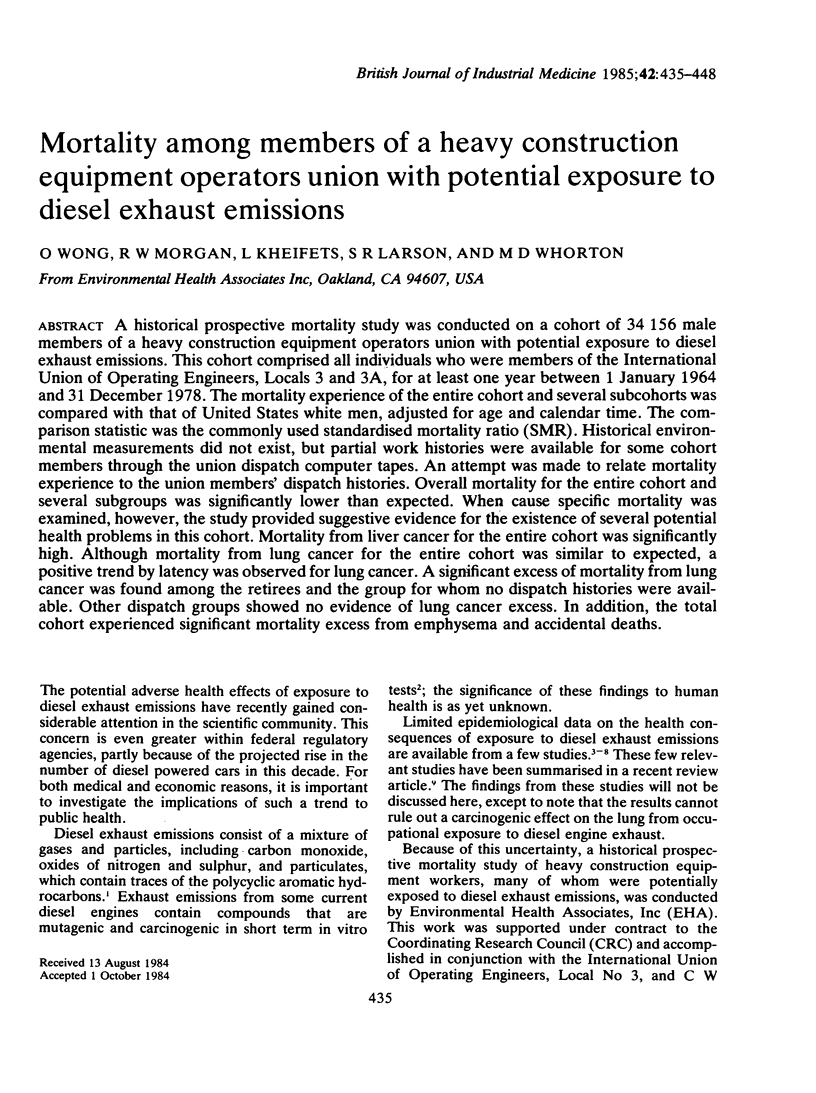
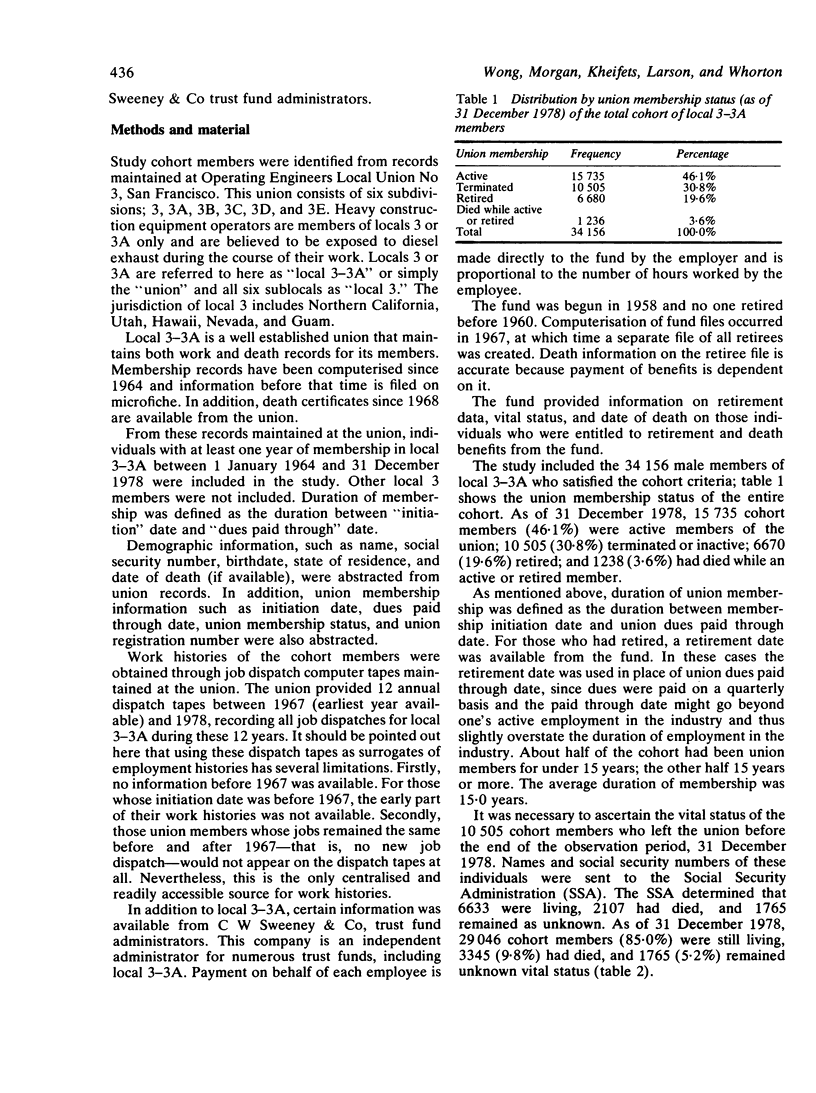
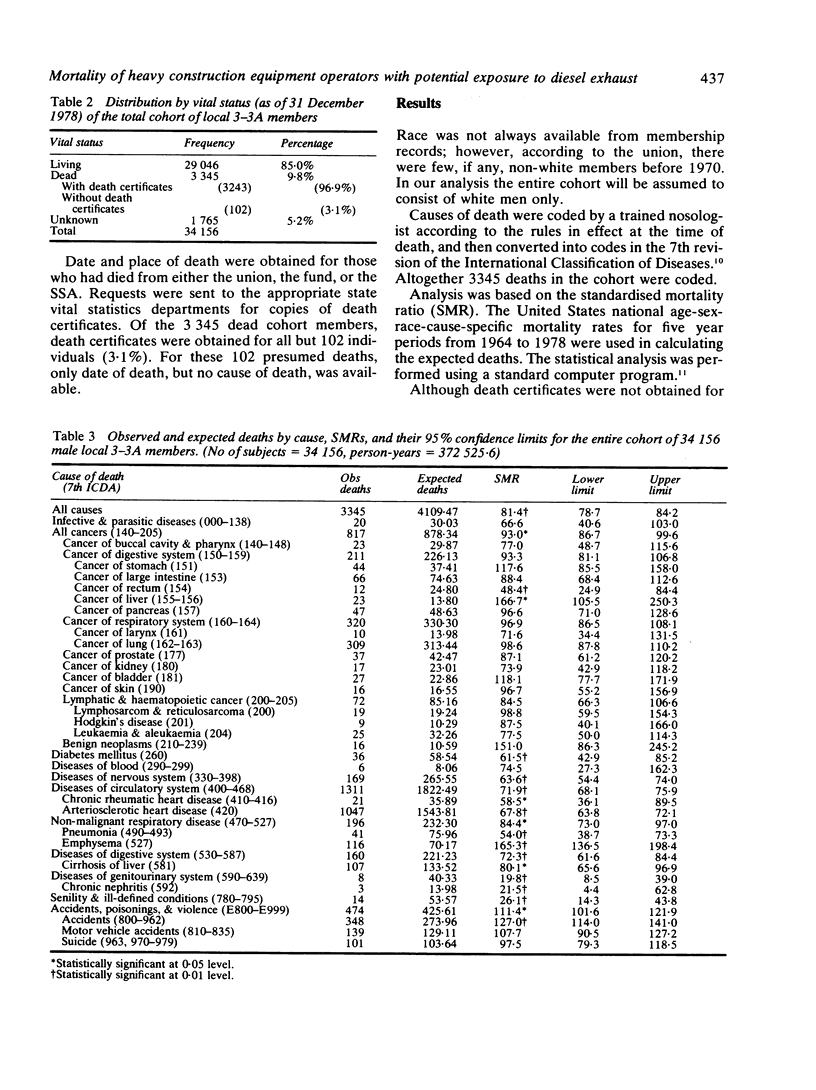
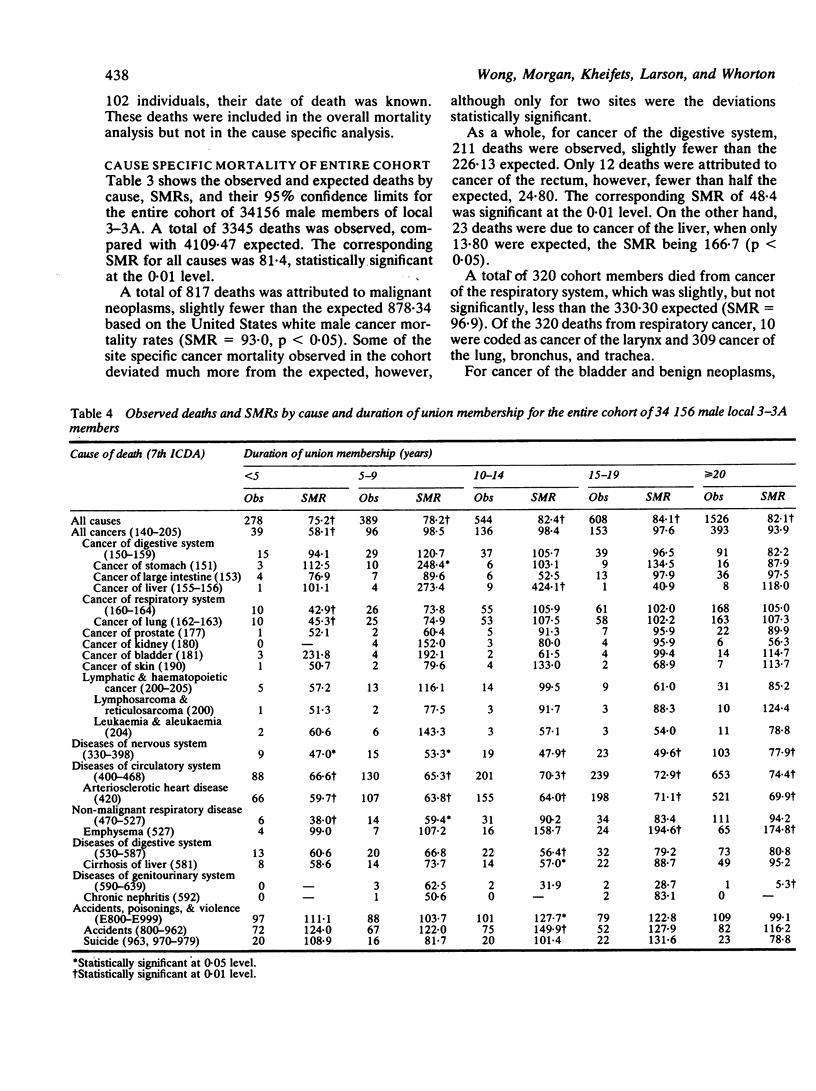
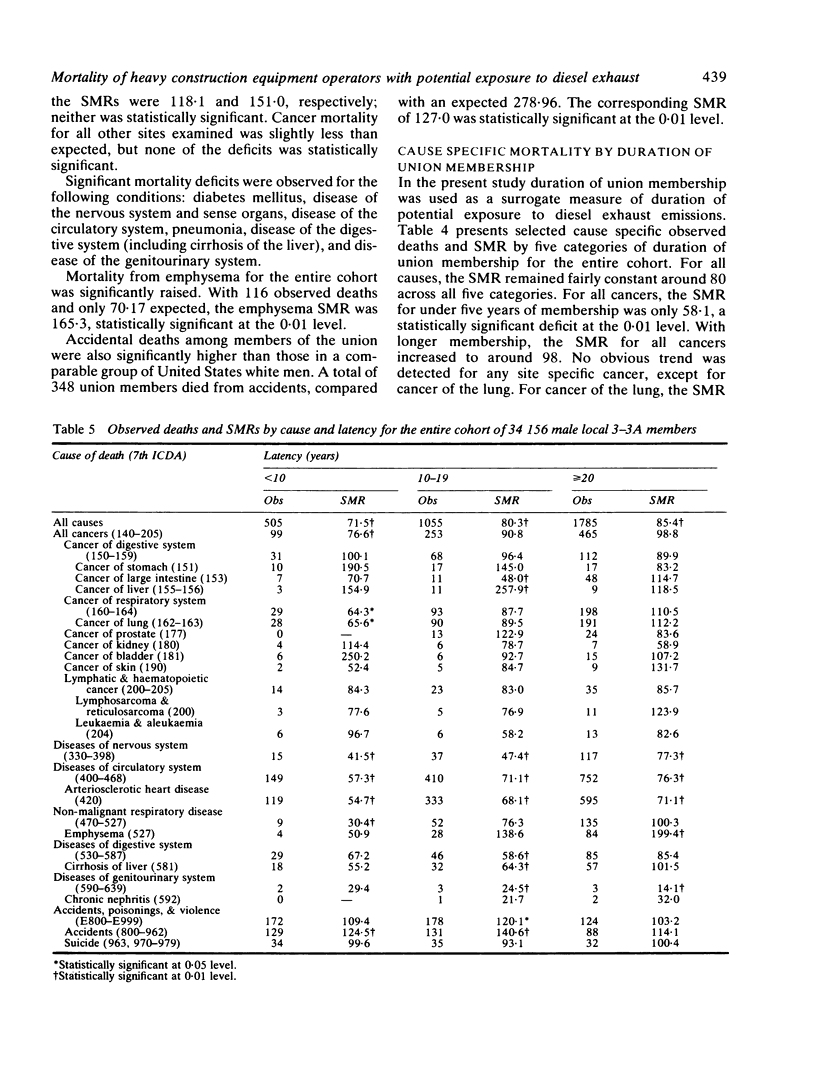
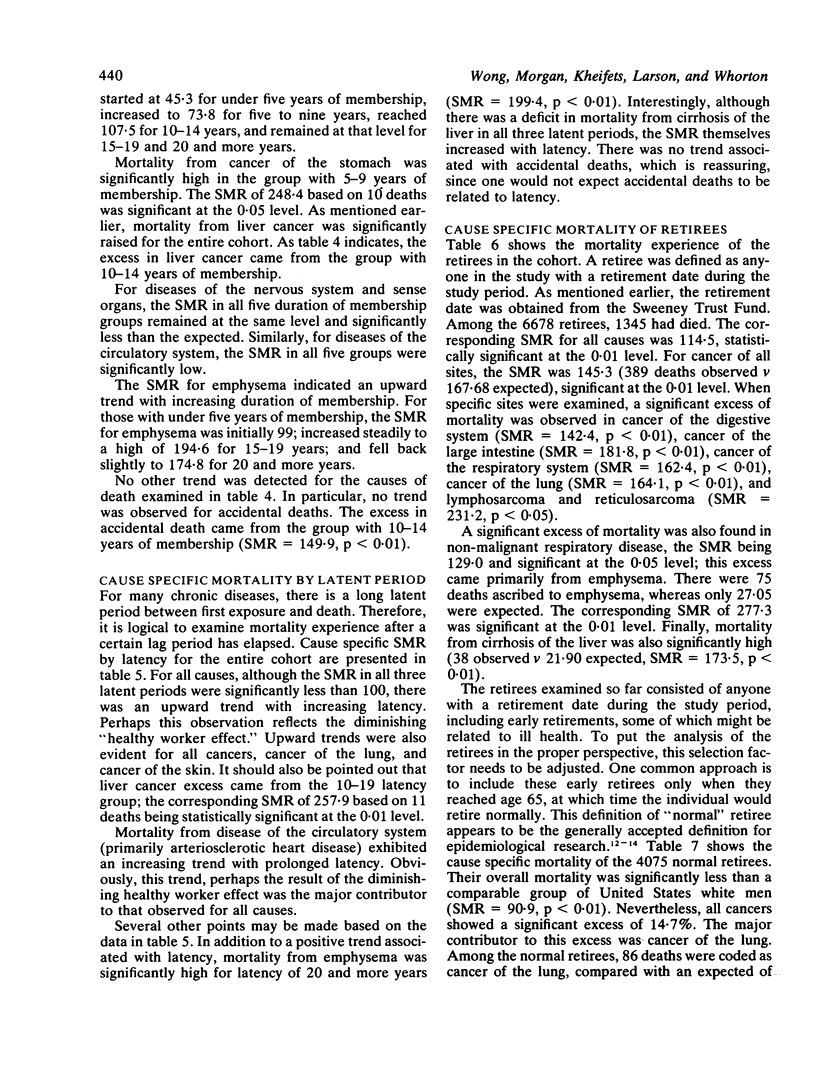
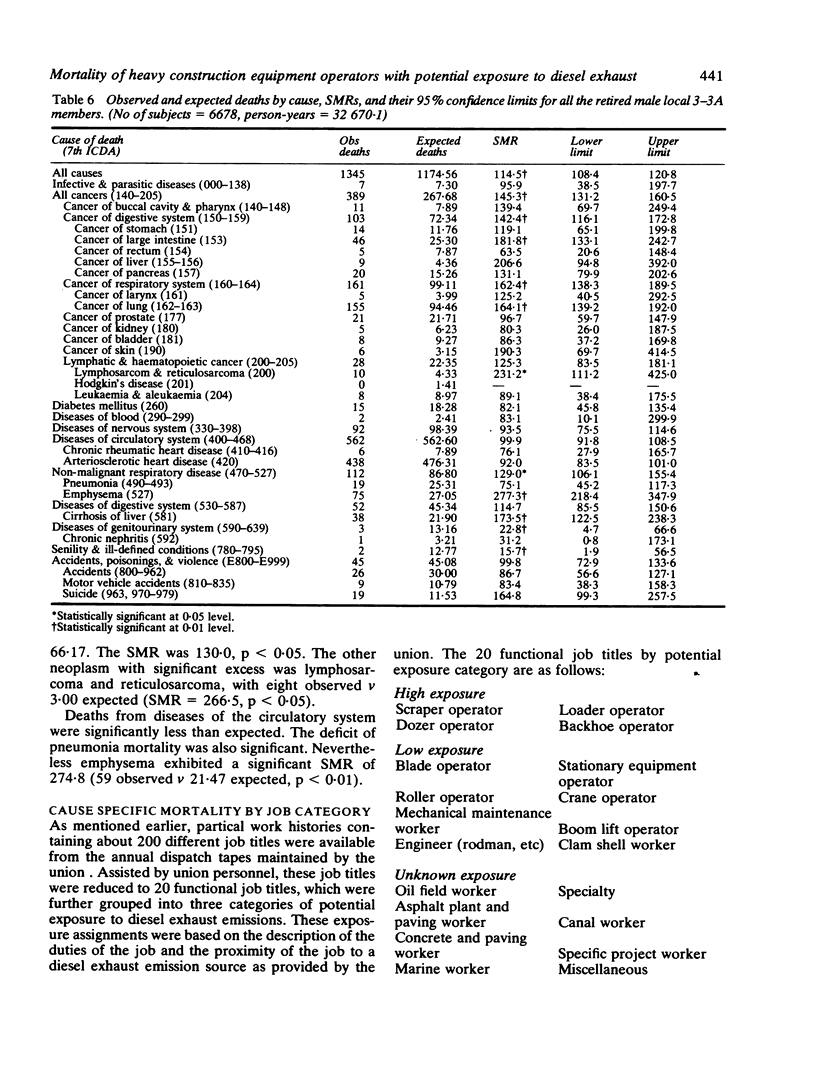
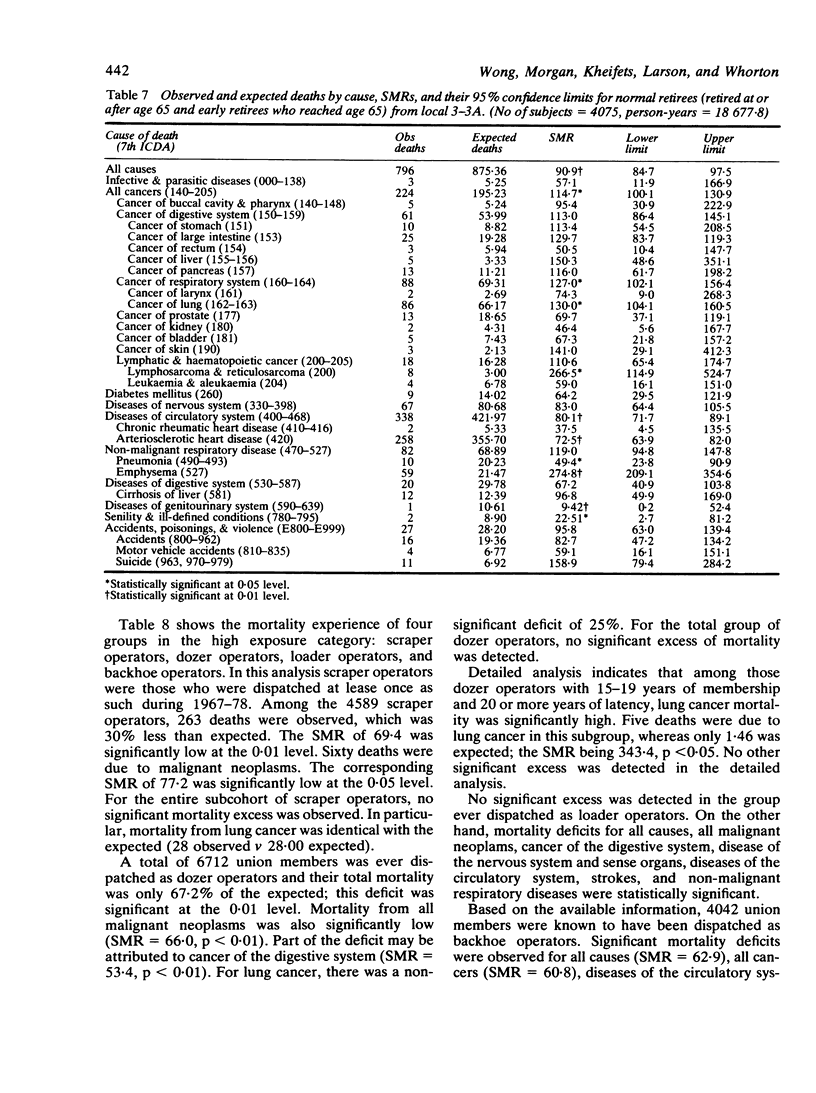
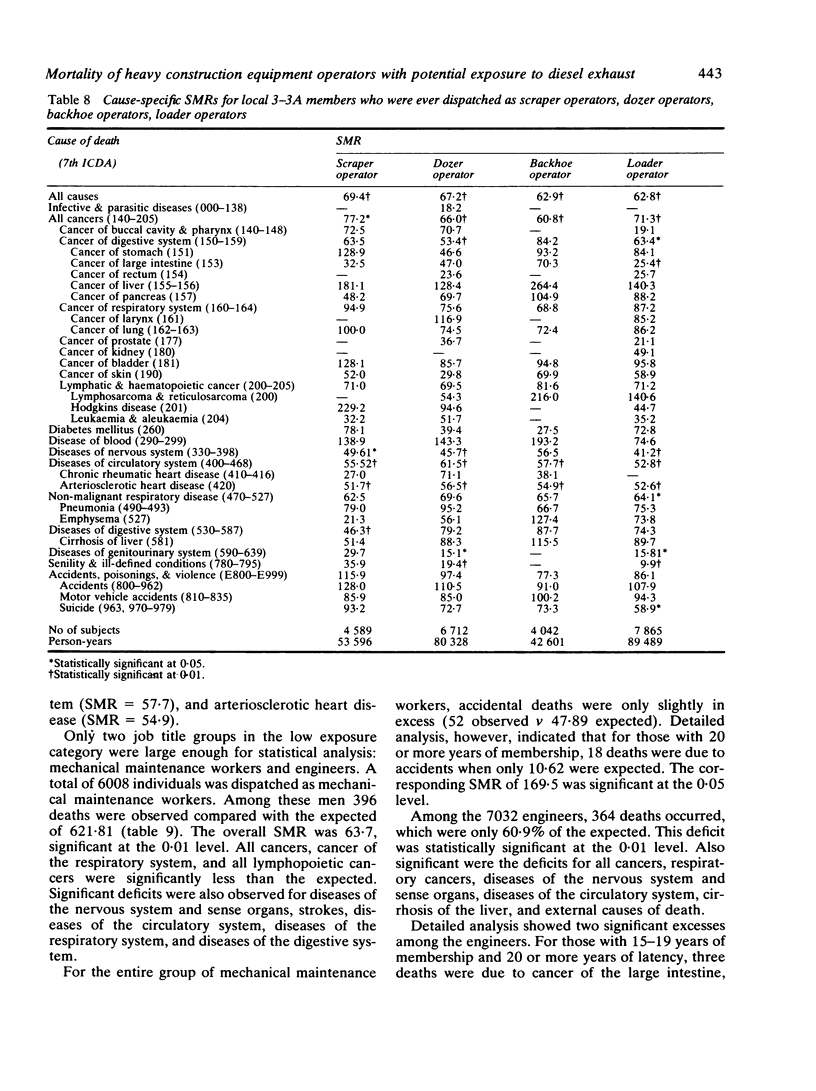
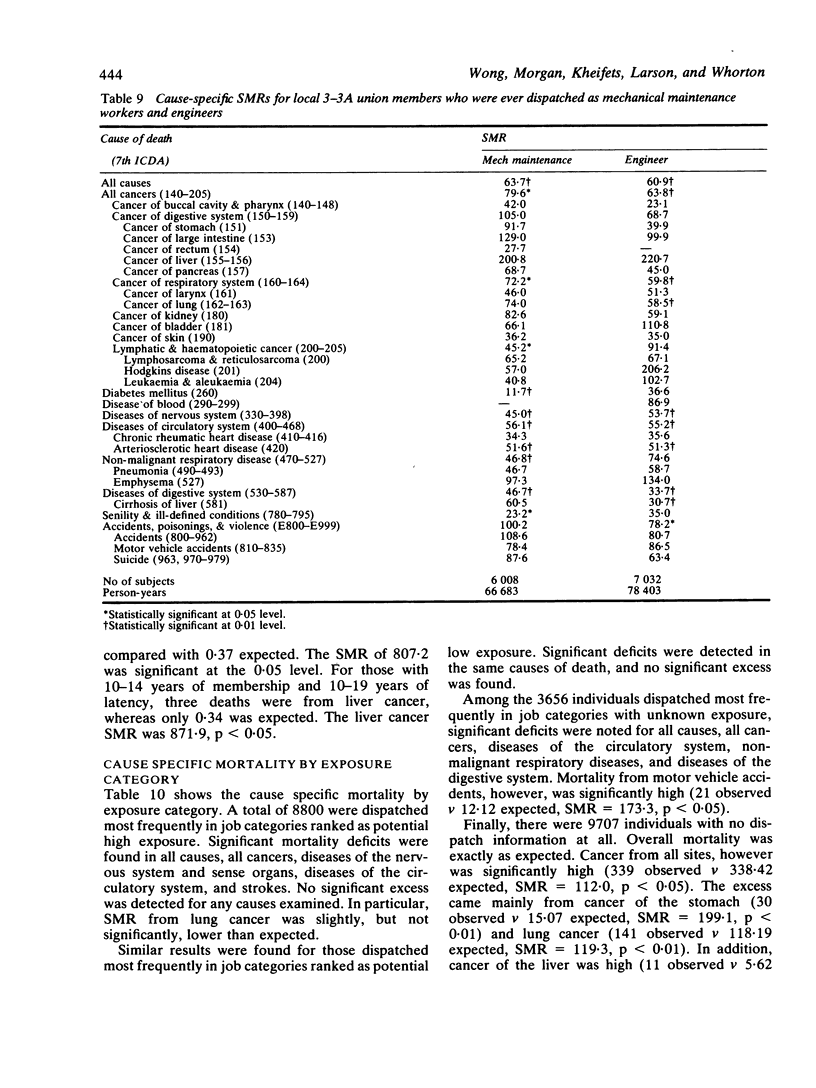
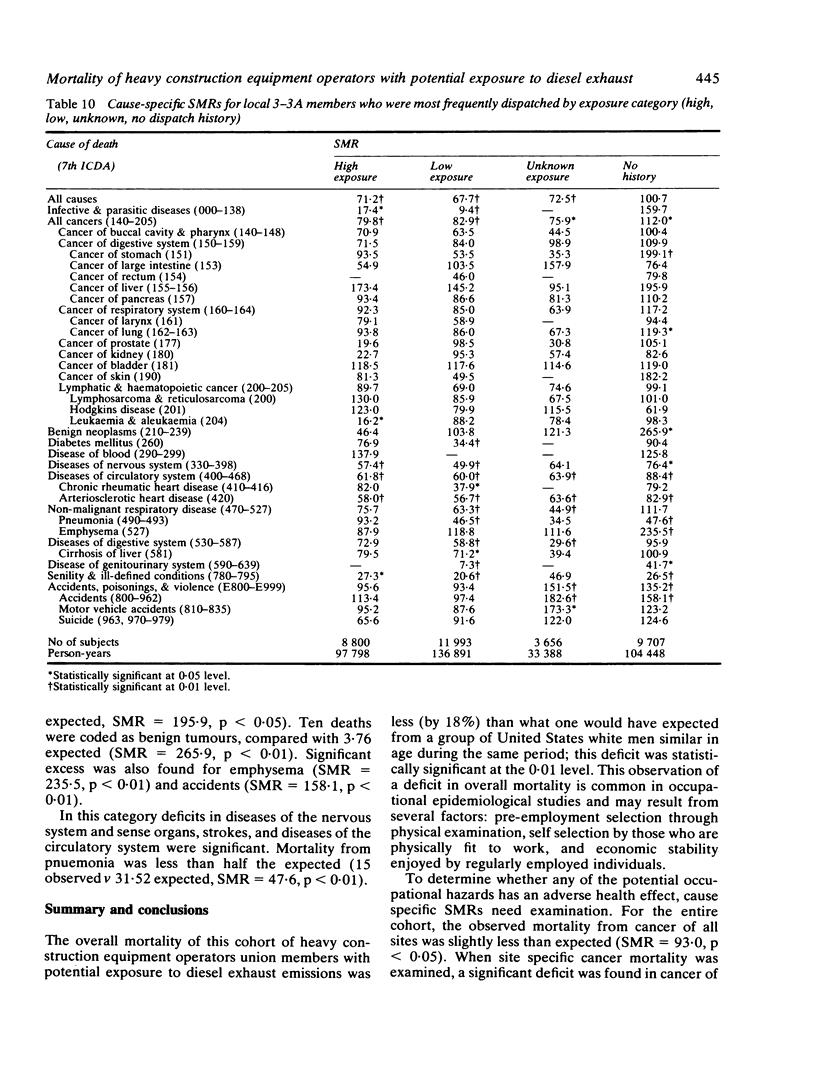
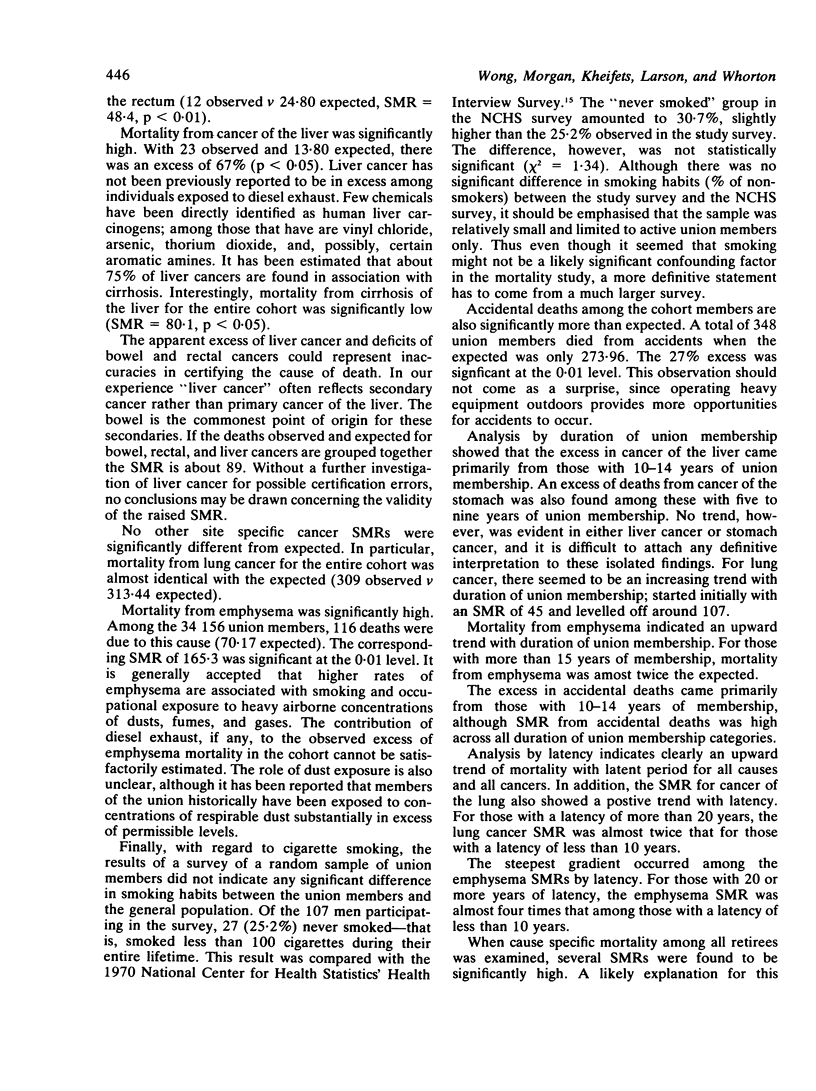
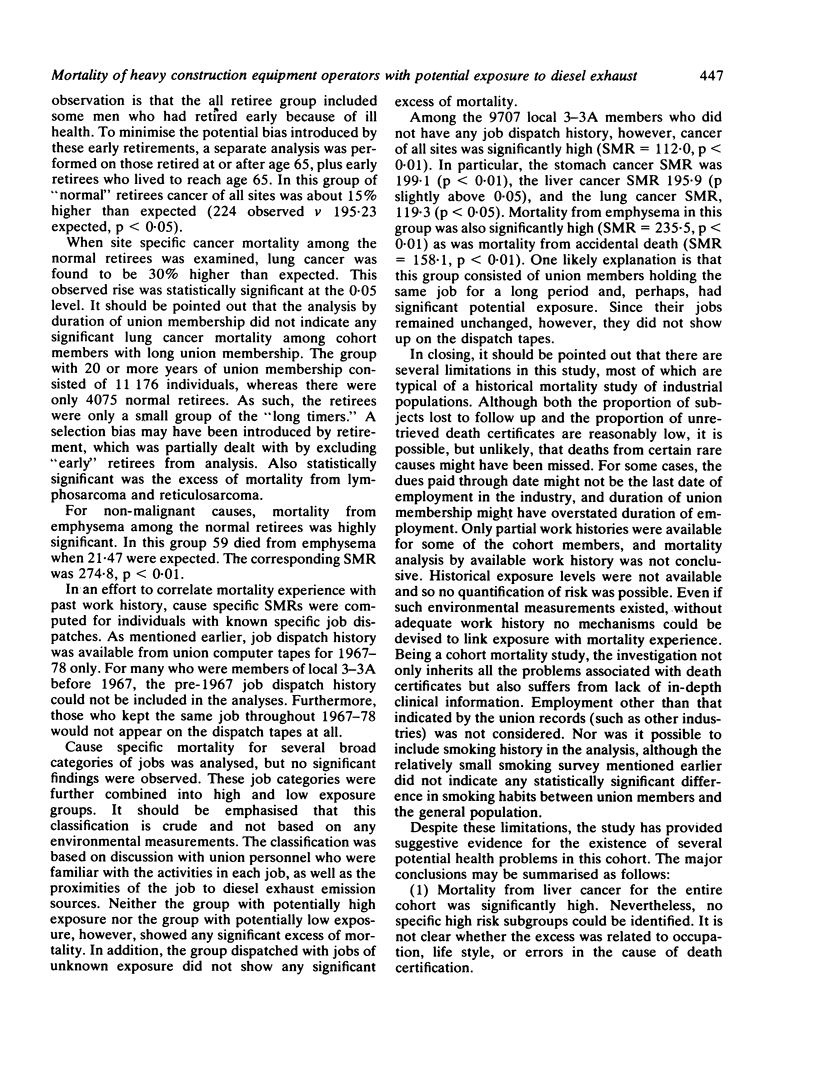
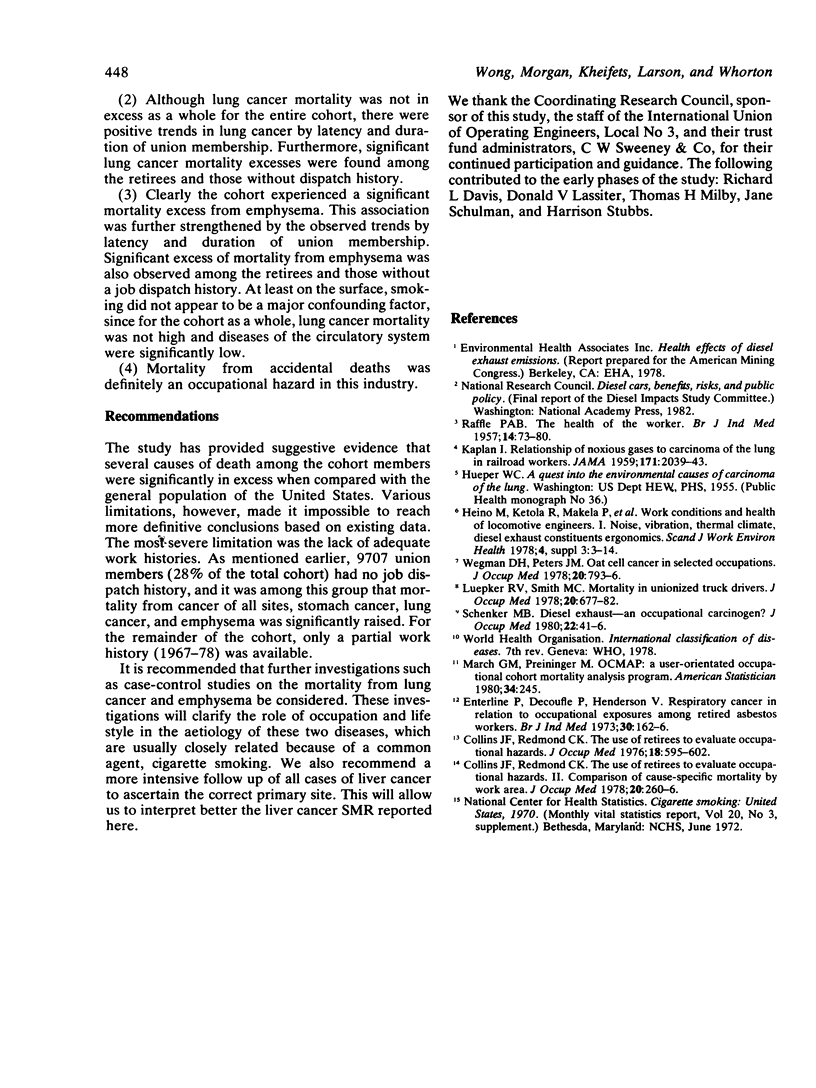
Selected References
These references are in PubMed. This may not be the complete list of references from this article.
- Collins J. F., Redmond C. K. The use of retirees to evaluate occupational hazards. II. Comparison of cause specific mortality by work area. J Occup Med. 1978 Apr;20(4):260–266. [PubMed] [Google Scholar]
- Collins J. F., Redmond C. K. The use of retirees to evaluate occupational hazards. J Occup Med. 1976 Sep;18(9):595–602. [PubMed] [Google Scholar]
- Enterline P., de Coufle P., Henderson V. Respiratory cancer in relation to occupational exposures among retired asbestos workers. Br J Ind Med. 1973 Apr;30(2):162–166. doi: 10.1136/oem.30.2.162. [DOI] [PMC free article] [PubMed] [Google Scholar]
- Heino M., Ketola R., Mäkelä P., Mäkinen R., Niemelä R., Starck J., Partanen T. Work conditions and health of locomotive engineers. I. Noise, vibration, thermal climate, diesel exhaust constituents, ergonomics. Scand J Work Environ Health. 1978;4 (Suppl 3):3–14. doi: 10.5271/sjweh.2728. [DOI] [PubMed] [Google Scholar]
- KAPLAN I. Relationship of noxious gases to carcinoma of the lung in railroad workers. J Am Med Assoc. 1959 Dec 12;171:2039–2043. doi: 10.1001/jama.1959.03010330001001. [DOI] [PubMed] [Google Scholar]
- Luepker R. V., Smith M. L. Mortality in unionized truck drivers. J Occup Med. 1978 Oct;20(10):677–682. [PubMed] [Google Scholar]
- RAFFLE P. A. The health of the worker. Br J Ind Med. 1957 Apr;14(2):73–80. doi: 10.1136/oem.14.2.73. [DOI] [PMC free article] [PubMed] [Google Scholar]
- Schenker M. B. Diesel exhaust - an occupational carcinogen? J Occup Med. 1980 Jan;22(1):41–46. [PubMed] [Google Scholar]
- Wegman D. H., Peters J. M. Oat cell lung cancer in selected occupations: a case-control study. J Occup Med. 1978 Dec;20(12):793–796. [PubMed] [Google Scholar]


